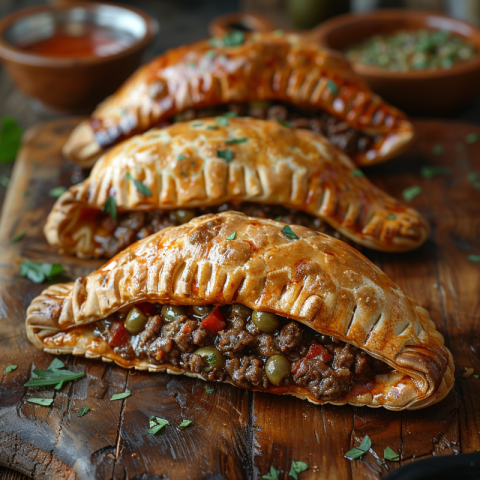
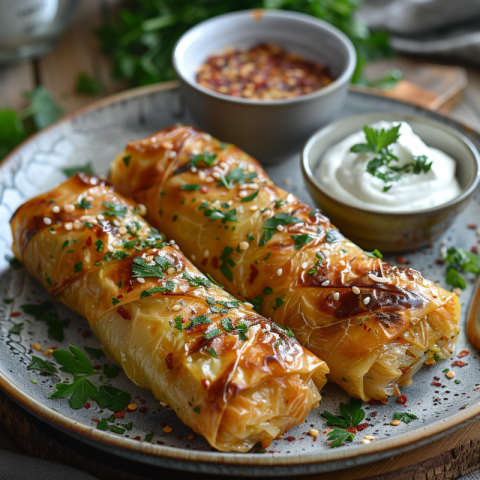
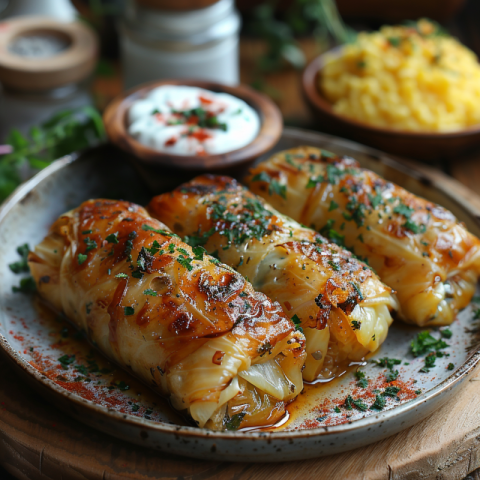
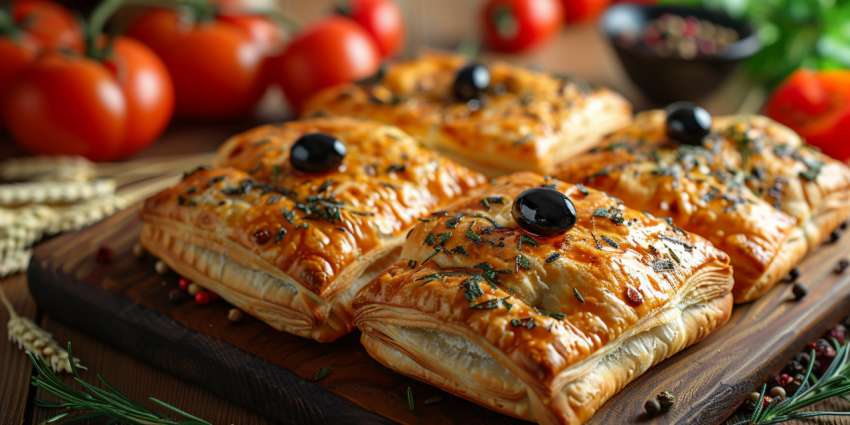
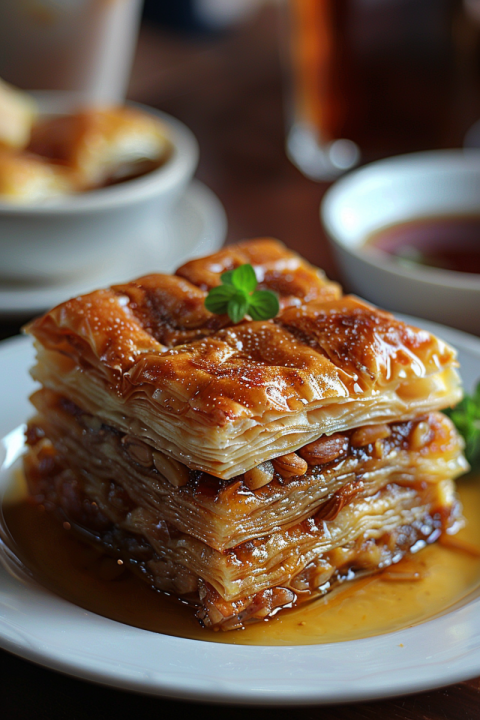
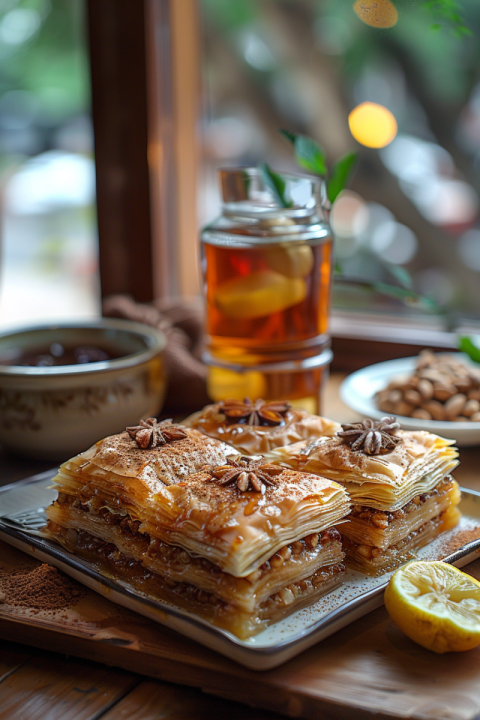
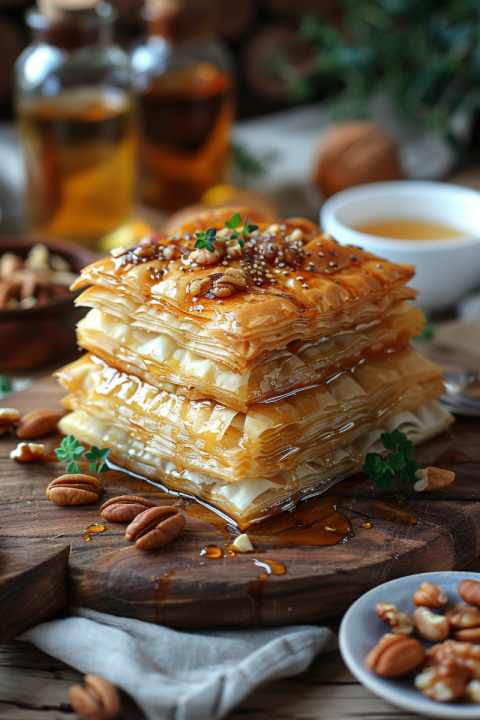
Baklava: A Rich and Sweet Pastry with Layers of History and Flavor
Baklava, a rich, sweet pastry made of layers of filo filled with chopped nuts and sweetened and held together with syrup or honey, is a beloved dessert with a long and fascinating history. Its delicate, flaky texture, combined with the crunch of nuts and the sweetness of syrup, creates a truly irresistible treat. Baklava is often associated with the Middle East and the Mediterranean, and it's a staple of celebrations, special occasions, and everyday enjoyment in many cultures.
1. The Ancient Origins of Baklava: A Pastry with a Long Lineage
The precise origins of baklava are debated, but its roots can be traced back to ancient times:
- Some food historians believe that baklava may have originated in ancient Mesopotamia, where layered breads were made with nuts and honey.
- The ancient Greeks had a similar pastry called "gastris," which involved layers of nuts and honey.
- The Roman placenta cake, a layered pastry with cheese and honey, may have also been a precursor to baklava.
- Many also believe it was refined during the Ottoman empire.
2. The Ottoman Empire and Baklava: A Refined Delicacy
The baklava we know today is most commonly associated with the Ottoman Empire:
- During the Ottoman era, baklava became a highly prized dessert, often served in the imperial court.
- The Topkapi Palace in Istanbul had special baklava kitchens dedicated to perfecting the pastry.
- Ottoman chefs refined the baklava-making process, developing the thin, delicate layers of filo dough that are characteristic of the modern dessert.
- The word "baklava" itself is believed to be of Ottoman Turkish origin.
3. Filo Pastry: The Key to Baklava's Flaky Texture
Filo (or phyllo) pastry is essential to the texture and structure of baklava:
- Filo is a very thin, unleavened dough that is stretched and layered to create a flaky, delicate pastry.
- Making filo dough from scratch is a labor-intensive process, requiring skill and patience.
- The dough is repeatedly rolled and stretched until it becomes paper-thin.
- In baklava, layers of filo are brushed with butter or oil and stacked, creating the pastry's signature flaky texture.
4. Nuts: The Heart of the Filling
Nuts are a crucial component of baklava filling:
- Walnuts, pistachios, and almonds are the most common nuts used in baklava, though other nuts, such as hazelnuts, can also be used.
- The nuts are typically chopped or ground and mixed with sugar and spices, such as cinnamon or cloves.
- The type of nut used often varies depending on regional preferences.
5. Syrup or Honey: Sweetening the Deal
Baklava is drenched in a sweet syrup or honey after baking:
- The syrup is typically made by boiling sugar with water, often flavored with lemon juice, rosewater, or orange blossom water.
- Honey can also be used as a sweetener, either on its own or mixed with sugar syrup.
- The hot syrup is poured over the freshly baked baklava, allowing it to soak into the layers of filo and nuts.
6. Regional Variations of Baklava: A Diverse Dessert
Baklava is enjoyed in many countries, each with its own regional variations:
- Turkish Baklava: Often made with pistachios or walnuts and a sugar-based syrup. Gaziantep in Turkey is especially famous for its baklava.
- Greek Baklava: Typically made with walnuts and honey syrup, often spiced with cinnamon and cloves.
- Lebanese Baklava: Often features a variety of nuts, including pistachios, walnuts, and pine nuts, and may be flavored with orange blossom or rose water.
- Armenian Baklava: Usually made with walnuts and a spiced sugar syrup.
- Persian Baklava: Can be drier than other versions and is often flavored with cardamom and rosewater.
7. Baklava and Celebrations: A Festive Treat
Baklava is often associated with celebrations and special occasions:
- It's a popular dessert during religious holidays, such as Ramadan, Eid, and Christmas in some cultures.
- Baklava is often served at weddings, birthdays, and other festive gatherings.
- It's a common sight in Middle Eastern and Mediterranean pastry shops and is often given as a gift.
8. Making Baklava: A Rewarding Challenge
While making baklava from scratch can be challenging, it's a rewarding experience:
- It requires patience, attention to detail, and a delicate touch when working with the thin filo pastry.
- Many home cooks prefer to use store-bought filo dough to simplify the process.
- There are numerous recipes available online and in cookbooks, offering variations in fillings, shapes, and syrup flavors.
9. The Future of Baklava
- Baklava remains a beloved dessert worldwide, and its popularity shows no signs of waning.
- Bakers are experimenting with new flavors and fillings, creating modern interpretations of this classic pastry.
- The availability of high-quality filo dough and a wide range of nuts and flavorings makes it easier than ever to enjoy baklava at home.
Conclusion:
Baklava is a rich and flavorful pastry with a long and fascinating history. Its delicate layers of filo, crunchy nuts, and sweet syrup create a truly irresistible combination. From its ancient origins to its status as a global delicacy, baklava has delighted people for centuries and continues to be a symbol of hospitality, celebration, and culinary artistry. Whether you're enjoying a piece of traditional baklava or a modern variation, this sweet treat is sure to leave a lasting impression.
Baklava, baklava recipe, how to make baklava, Turkish baklava, Greek baklava, Lebanese baklava, types of baklava, baklava history, filo pastry, phyllo dough, baklava ingredients, baklava filling, nuts in baklava, walnut baklava, pistachio baklava, honey syrup, sugar syrup, baklava near me, buy baklava online, best baklava, authentic baklava, baklava variations, baklava calories, Gaziantep baklava, Ottoman cuisine, Middle Eastern desserts, Mediterranean desserts.

